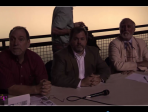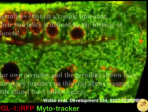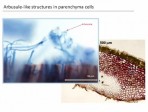 00:03:00
00:03:00
The Krebs Cycle
Matt Johnson explains the Krebs Cycle, its discovery by a University of Sheffield Nobel Prize winner and its role in endurance sports such as cycling.
More details | Watch now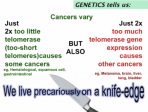 00:35:00
00:35:00
Telomeres: Telling Tails
Telomeres protect chromosome ends and help stabilize the genome. Throughout human life and in aging, telomeres often erode down, eventually causing cells to malfunction or die. The highly regulated cellular enzyme telomerase adds telomeric DNA to tel....
More details | Watch now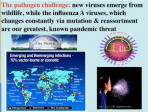 00:29:00
00:29:00
The Killer Defence
Immune surveillance by virus-specific CD8+ cytotoxic T lymphocytes (CTLs), or killer T cells, has long been known to be central to the control of acute infections and some cancers, though the role of CTL memory in the rapid recall of immune protectio....
More details | Watch now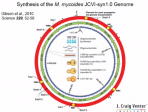 00:31:00
00:31:00
Minimizing a Bacterial Genome by Global Design and Synthesis
In 2010, we chemically synthesized the 1078 Kb Mycoplasma mycoides genome and transplanted it into a recipient cell cytoplasm to create a 'synthetic cell', JCVI-syn1.0 (Science, 329, 52-56, 2010). We identified several hundred non-essential genes by ....
More details | Watch now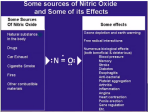 00:39:00
00:39:00
Role of Nitric Oxide and Cyclic GMP in Cell Signaling and Drug Development
Nitric oxide research has grown rapidly with about 150,000 research publications describing its biological effects. It is an important messenger molecule that affects most tissues and biological processes. Many effects of nitric oxide are mediated by....
More details | Watch now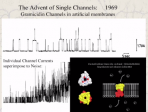 00:30:00
00:30:00
Ion Channels: Their Discovery, their Function and their Role in Diseases
The concept of bioelectricity emerged in the late 18th century, based on the experiments of Galvani and Volta. Sixty years ago, Hodgkin and Huxley showed that the nerve impulse is a result of permeability changes of the nerve membrane. This raised th....
More details | Watch now 00:31:00
00:31:00
The Origins of Cellular Life
The complexity of modern biological life has long made it difficult to understand how life could emerge spontaneously from the chemistry of the early earth. We are attempting to synthesize simple artificial cells in order to discover plausible pathwa....
More details | Watch now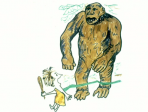 00:30:00
00:30:00
The Origin of Reversible Protein Phosphorylation as a Regulatory Mechanism
Reversible protein phosphorylation can be considered one of the most prevalent mechanism by which eukaryotic cellular events are regulated. It is directly involved in numerous pathological conditions, and bacterial and viral diseases. This process wa....
More details | Watch now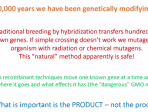 00:27:00
00:27:00
A Crime against Humanity
When Monsanto first tried to introduce GMO seeds into Europe there was a backlash by the Green parties and their political allies, who feared that American agro-business was about to take over their food supply. Thus began a massive campaign not agai....
More details | Watch now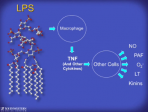 00:31:00
00:31:00
Finding Mutations that Affect Immunity
Beginning with an exception to normal function caused by a genetic aberration, one may hope to find at least one protein with non-redundant function in a certain biological process. This approach permitted the identification of the receptor for bacte....
More details | Watch now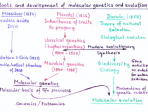 00:34:00
00:34:00
Insight into the Laws of Nature for Biological Evolution
Both evolutionary biology and genetics have their roots 150 years ago in work with phenotypic variants of plants and animals. In contrast, microbial genetics originating as recently as the 1940s, rapidly revealed that filamentous DNA molecules are th....
More details | Watch now 00:29:00
00:29:00
From Proto-oncogenes to Precision Oncology
The diagnosis, classification, and treatment of human cancers are being transformed by scientific discoveries that were strongly influenced by the discovery of the c-src proto-oncogene, as described in the lecture by Michael Bishop. The path to this ....
More details | Watch now 00:32:00
00:32:00
Tickling Worms – Surprises from Basic Research
Research, at least my research, has never been linear. I have found that my lab and I often double back on problems after years of inactivity or go off in entirely new directions as dictated by the work and people's interests This lack of direction r....
More details | Watch now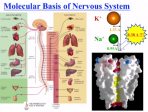 00:29:00
00:29:00
How to Model the Action of Complex Biological Systems on a Molecular Level
Despite the enormous advances in structural studies of biological systems we are frequently left without a clear structure function correlation and cannot fully describe how different systems actually work. This introduces a major challenge for compu....
More details | Watch now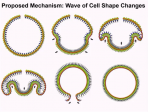 00:25:00
00:25:00
Physical perspective on cytoplasmic streaming
Professor Ray Goldstein FRS is the Schlumberger Professor of Complex Physical Systems at the University of Cambridge. Here he describes a biological example of topological inversion, with relevance to engineering problems in human technology.
More details | Watch now 01:14:00
01:14:00
Cuckoos and their victims
The sight of a little warbler feeding an enormous cuckoo chick has astonished observers since ancient times. It was once thought that cuckoos were unable to raise their own young because of defective anatomy and behaviour, and so other birds were onl....
More details | Watch now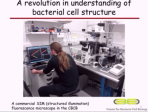 01:10:00
01:10:00
Bacterial cell walls, antibiotics and the origins of life
The cell wall is a crucial structure found in almost all bacteria. It is the target for our best antibiotics and fragments of the wall trigger powerful innate immune responses against infection. Surprisingly, many bacteria can switch almost effortl....
More details | Watch now 01:09:00
01:09:00
Green Fluorescent Protein: Lighting up Life
The accidental discovery of this wonderful tool has changed the face of biology.
More details | Watch now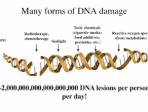 01:16:00
01:16:00
The End of Disease
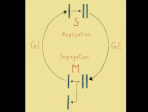 00:57:00
00:57:00
Understanding the Cell cycle
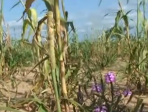 00:09:00
00:09:00
The biology of Striga
One of the major parasites is striga, a weed that sucks the juice and nutrients from cereal crops such as millet, sorghum and maize and causes great yield losses. A single striga plant can produce hundreds of thousands of seeds. The seeds are so tiny....
More details | Watch now 00:12:00
00:12:00
‘Witch Weed’ – breaking the spell
Striga (witchweed) is a parasitic weed that seriously constrains the productivity of staples such as maize, sorghum, millet and upland rice on some farms in Uganda. Kilimo Trust supported this initiative to try and control its spread.
More details | Watch now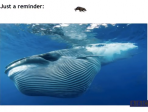 01:01:00
01:01:00
Genetic control and the mammalian radiation
To grow tissues in our body two key types of DNA control how, where and when to build essential proteins. Recent comparisons of mammal genomes show that instructions coding how to build proteins are similar across diverse species. In contrast the gen....
More details | Watch now 01:13:00
01:13:00
Targeting the human kinome: cancer drug discovery
This lecture discusses how the discovery of the Philadelphia chromosome provided the first example of a link between cancer and a recurrent genetic abnormality. This chromosomal translocation, which results in activation of the Abl protein kinase, re....
More details | Watch now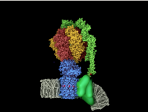 00:37:00
00:37:00
Generating the Fuel of Life
The lecture will be devoted to the topic of how the biological world supplies itself with energy to make biology work, and what medical consequences ensue when the energy supply chain in our bodies is damaged or defective. We derive our energy from ....
More details | Watch now 00:31:00
00:31:00
Biological Evolution in the Context of Cosmic Evolution and of Cultural Evolution
After reconsidering the very long time periods in cosmic evolution, we will focus our attention to the evolutionary development of living organisms on our planet Earth. The genetic variants (mutations), which are occasionally produced, are alteratio....
More details | Watch now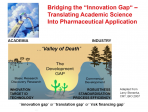 00:33:00
00:33:00
Structural Biology and its Translation into Practice and Business: My Experience
As a student in the early 1960s, I had the privilege to attend winter seminars organized by my mentor, W. Hoppe, and by M. Perutz, which took place in a small guesthouse in the Bavarian-Austrian Alps. The entire community of a handful of protein cry....
More details | Watch now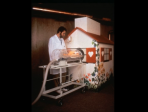 00:36:00
00:36:00
A Personal View of the History of Nuclear Magnetic Resonance in Biology and Medicine
In 1952, Felix Bloch and Edward Purcell were awarded the Nobel Prize in Physics for the description of the phenomenon of nuclear magnetic resonance (NMR). Over the years, NMR has been used in a wide range of fundamental studies in physics, and in the....
More details | Watch now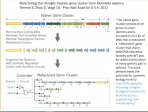 00:34:00
00:34:00
Synthetic Biology for Genetic Engineering in the 21st Century
Synthetic biologists seek to design, build, and test novel biological systems. We have chemically synthesized a bacterial genome (Mycoplsama mycoides, 1078Kb) and brought it to life by transplantation into the cytoplasm of a related species. We are....
More details | Watch now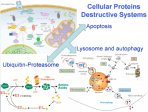 00:32:00
00:32:00
The Revolution of Personalized Medicine: Are We Going to Cure All Diseases and at What Price?
Many important drugs such as penicillin, aspirin, or digitalis, were discovered by serendipity - some by curious researchers who accidentally noted a "strange" phenomenon, and some by isolation of active ingredients form plants known for centuries to....
More details | Watch now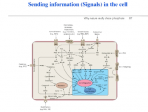 00:31:00
00:31:00
Multiscale Simulations of the Functions of Biological Molecules
Despite enormous advances in structural studies of biological systems we are frequently left without a clear structure-function correlation and cannot fully describe how different systems actually work. This introduces a major challenge for computer....
More details | Watch now 00:35:00
00:35:00
GFP and After
Since its introduction as a biological marker, the Aequorea victoria Green Fluorescent Protein (GFP) has had a strong impact in biology, being used in an ever-increasing variety of ways. I will review a bit of the history of GFP and show how having ....
More details | Watch now 00:31:00
00:31:00
Atmosphere Climate and Chemistry in the Anthropocene
Despite their relatively small mass, 10-5% of the earth biosphere as a whole, generations of ambitious 'homo sapiens' have already played a major and increasing role in changing basic properties of the atmosphere and the earth's surface. Human activ....
More details | Watch now 01:01:00
01:01:00
How embryos build organs to last a lifetime
All the organs of our body originate from small founder populations of cells which multiply into complex structures. ÊAdult stem cells are used to maintain organs throughout adult life and to repair or regenerate them after damage.Ê Focusing on the....
More details | Watch now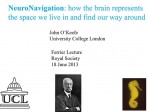 01:02:00
01:02:00
NeuroNavigation: how the brain represents the space we live in and finds our way around
Learning about new environments or locating ourselves in familiar environments are some of the most fundamental tasks that the brain performs. Information is not stored in response to biological needs such as hunger or thirst but on the basis of cogn....
More details | Watch now 00:47:00
00:47:00
From bench to bedside: KATP channels and neonatal diabetes
Whether you eat a whole box of chocolates or fast for the day, the pancreatic beta-cells ensure that your blood glucose level remains relatively constant by regulating the release of insulin from the pancreatic beta-cells. Diabetes results when insul....
More details | Watch now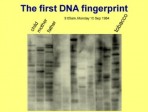 01:01:00
01:01:00
Genetic fingerprinting: past, present and future
Alec Jeffreys presents the origins of DNA fingerprinting through to the latest developments and their social impact
More details | Watch now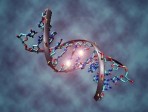 01:17:00
01:17:00
Genetics, epigenetics and disease
The human genome sequence has been available for more than a decade, but its significance is still not fully understood. While most human genes have been identified, there is much to learn about the DNA signals that control them. This lecture describ....
More details | Watch now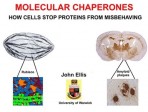 01:04:00
01:04:00
Molecular chaperones: how cells stop proteins from misbehaving
Proteins are the action molecules of all cells, and to function properly, protein chains must fold and assemble correctly. But each chain of every protein runs the risk that it will combine with one or more identical chains to form nonfunctional aggr....
More details | Watch now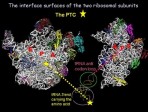 01:03:00
01:03:00
From bears’ winter-sleep to advanced antibiotics
Professor Ada Yonath, Weizmann Institute of Science, Israel. To facilitate instant recovery of active life once bears wake up from their winter sleep, nature provides ingenious mechanism based on periodic packing of their ribosomes, the cellular ma....
More details | Watch now 01:04:00
01:04:00
Nature’s glass: half-full or half-empty?
Andrew Balmford FRS is Professor of Conservation Science at University of Cambridge. The world’s governments failed to meet their pledge of reducing the rate of biodiversity loss by 2010. Wild populations, their habitats, and the benefits they pr....
More details | Watch now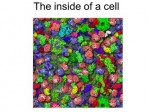 01:07:00
01:07:00
Finding patterns in genes and proteins: decoding the logic of molecular interactions
Dr Sarah Teichmann is based at the MRC Laboratory of Molecular Biology at the University of Cambridge. In the post-genomic era, high-throughput methods are providing us with a deluge of data about genes and proteins. What knowledge about biology do....
More details | Watch now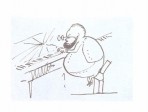 00:58:00
00:58:00
The Zoological World of Edward Lear
Clemency Fisher is Curator of Vertebrate Zoology at National Museums Liverpool. Edward Lear is most famous for his Nonsense Rhymes, such as “The Owl and the Pussycat” and “The Quangle Wangle’s Hat”, but he was also a talented zoological art....
More details | Watch now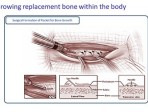 00:58:00
00:58:00
Regenerating organs and other small challenges
A disagreeable side effect of longer life-spans is the failure of one part of the body – the knees, for example – before the body as a whole is ready to surrender. The search for replacement body parts has fueled the highly interdisciplinary fiel....
More details | Watch now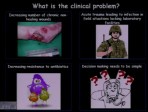 00:16:00
00:16:00
Using polymers to reduce bacteria in wounds
A research group provide details of their work in helping wounds to heal by developing polymers that will reduce the bacterial infections
More details | Watch now